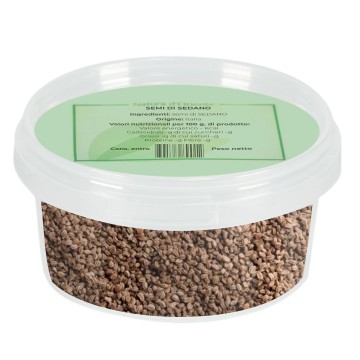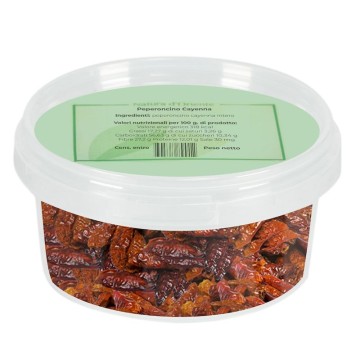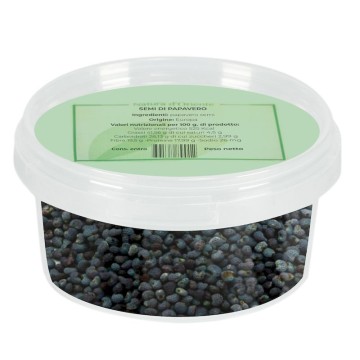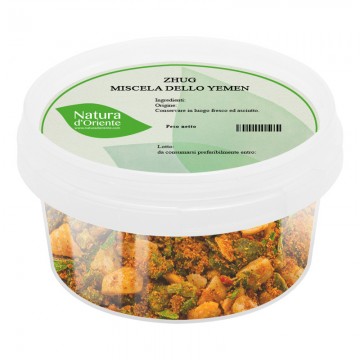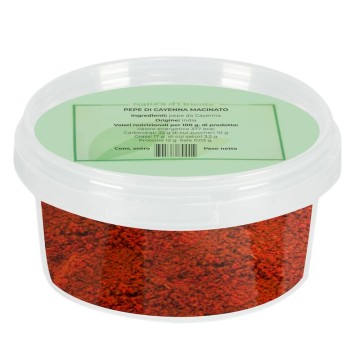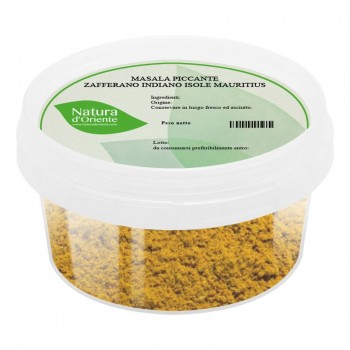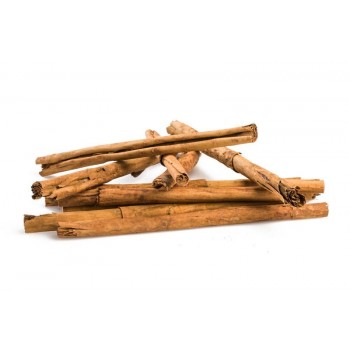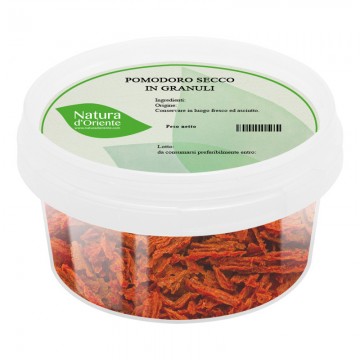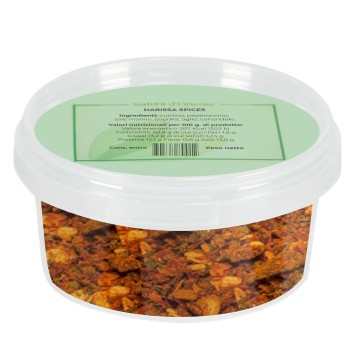The vanilla pod is highly appreciated for its intense and natural scent; mainly used to flavor desserts and to make excellent pastry creams. The pods of the Bourbon vanilla variety have a high concentration of the aromatic principle vanillin, and complex flavor notes. It is versatile on desserts, savory dishes and refined culinary creations. In addition, the pod gives its antioxidant properties and a scent that calms, fights stress and promotes rest.
Vanilla pods, also called berries, are a special ingredient to infuse flavor and aromas into dishes. In addition to the unmistakable aromatic profile of vanilla, this specific Bourbon variety is one of the most prized in the kitchen. It infuses preparations with a rich and creamy flavor, which gives consistency. Its intense and exotic smell, excellent for flavoring in an enveloping way. It has sweet notes and a woody nuance in the background; in infusions the sticks give notes of wood and full, favored by many chefs to give depth in a versatile way. It releases its flavor slowly and is perceived at the end, giving an aromatic persistence to the dish or drink. It can create a complex and surprising flavor for desserts and refined savory dishes, with a unique sensory experience.
The properties of Vanilla
This spice shows antioxidant properties linked to the content of polyphenols, vanillin and vanillic acid in the berries or pods. These are natural compounds of the plant, which act against the action of free radicals on our cells; they help prevent cell aging, slowing down the formation of other harmful substances. Some studies on vanilla have long focused on its properties useful for the correct metabolism of carbohydrates, helping the body in the management of sugars and lipids in the blood. The scent of vanilla is famous in aromatherapy for its calming effect, which facilitates rest and sleep, reducing states of stress. It also improves good mood and is useful for alleviating nervous hunger. The aroma of vanilla in food increases the perception of sweetness and, for this reason, can represent a support to reduce other sugars in foods and drinks. For external use, through empty and exhausted vanilla pods, it can perfume the house with a relaxing aroma and is considered an aphrodisiac. Furthermore, for the beauty of the hair, the already used pods can be ground and mixed with a little natural oil (for example coconut oil) for a hair care treatment. The Bourbon vanilla that we offer is considered one of the highest quality varieties. Not only for the organoleptic qualities of the pods, oily and large, but also for the concentration of natural vanillin. It is present in a higher percentage than other varieties: on average 2% and can reach 2.4%. This result comes from the processing of the pods according to the Bourbon method of fermentation and drying. You get a spice with a concentrated taste and distinct notes, balanced between sweetness and body. It pairs equally well with sweet and savory dishes, with an adaptability that is not often found in other spices. The cost of Bourbon vanilla It is among the most prized spices in the world, and its cost is high because the cultivation and processing processes are long and accurate. Furthermore, in the vanilla version, all the phases, from cultivation to harvesting, fermentation and storage, are carried out by hand without using machinery, fertilizers or pesticides.
How to buy our vanilla in pods?
You can find Bourbon vanilla beans at a convenient cost in relation to the quality, available in our online spice shop Natura d'Oriente. We have selected the pods from first-class crops, free of pesticides and harmful substances. You can buy vanilla pods – about 18 cm long – by purchasing 1 or 2 pieces, convenient for your culinary use.
How to use vanilla pods in cooking?
Vanilla pods can be used to create delicious recipes, used in different ways. In most cases, to add vanilla to recipes, the seeds contained inside the pods are extracted - the part richest in aroma and flavor. You can use a sharp knife to open the pod or berry. You need to place the pod on the cutting board, or stable surface. You cut with the knife starting from the top, continuing down lengthwise until the pod splits in two (without separating the two parts). From the inside you can see the seeds, which are extracted by scraping them with a spoon (or with the back of the knife); ready to be added to the recipe and flavor it. While you scrape, collect all the vanilla seedsin a small bowl or on baking paper. Be careful not to scrape too deep and collect the pulp – although it is aromatic, it risks bringing with it small fibrous parts. The seeds can be added directly to the dish or incorporated into a mixture to improve the flavor.
How to reuse empty vanilla pods
The aroma can be extracted by infusing the vanilla. The whole pods are placed in a liquid, usually milk or cream, for about 15 minutes. The infusion can be done hot or cold (maceration). In the latter case the vanilla aromas do not volatilize and complex aromas are obtained; in the hot infusion they will be more rounded and rich. Alternatively, you can create an alcoholic vanilla bean infusion by infusing the scored pods with rum or vodka, for at least a month in an airtight container. These vanilla sticks can flavor sugar, leaving the two ingredients in an airtight container for several days. In addition, the empty vanilla bean can be ground, creating a delicately flavored vanilla powder to which you can add some spices, such as cinnamon or cloves. Use high-quality vanilla beans, which should be dried to remove any residual moisture (on the center rack of the oven at 40 °C or with a dehydrator). Break them into small portions of about 1 centimeter and then pulverize them with a spice grinder or food processor, until you reach the fineness you prefer.
Bourbon vanilla in the kitchen
This variety is perfect for creating desserts and pastry creams, rich in flavor and creamy. In savory dishes it shows qualities of flexibility, adding a complex depth of flavor. Its woody note avoids the sometimes sweetish taste of classic vanilla.
Those who cultivate the art of infusing flavor through spices know well that Bourbon vanilla allows a particular intensity, having a high percentage of vanillin. For this reason, it is best not to overdo the doses, since its note considered "intriguing" (in cooking as in cosmetics), can be nauseating in exaggerated doses.
Furthermore, it is important to follow the recipes and evaluate the cooking time, because the intensity of the heat for a long time can affect the final aroma of the vanilla. Bourbon can replace other types of vanilla in most recipes, always evaluating the quantity based on the variety to be replaced. Some show a stronger or more delicate aromatic profile than Bourbon.
Recipes with vanilla pods
Desserts: vanilla seeds can be added to cake mixes, plum cakes, biscuits, pastries and baked goods. They are commonly used for their sweet aroma in classic vanilla ice cream, cheesecake, puddings, fruit and spoon desserts, salted caramel, chutney.
Creams: Vanilla gives life to custards such as crème brûlé, crème chantilly, custard and the famous Bourbon vanilla cream - used for a fragrant and creamy note to coffee. It can flavor vanilla-infused whipped cream, chocolate and other flavored doughs.
Drinks: Vanilla pods can infuse aroma to many drinks (warm milk, coffee, hot chocolate). It can flavor infusions, teas and herbal teas. They are used to create liqueurs, flavored syrups, cocktails. They can imprint their aroma in alcohol, leaving them to macerate until completely infused.
Savory recipes: Bourbon vanilla beans enhance the flavor of sauces, marinades and glazes, adding depth and complexity without being too sweet. Flavoring butter, cream and milk creates a mixture suitable for soups and sauces. Vanilla can be dosed on seafood, meat dishes, curries, risottos, tomato salads and vegetables.
Flavoring: The vanilla pod cut in half can flavor sugar and coffee beans for grinding.
Vanilla infusion: The whole vanilla pod can be used without cutting it, leaving it in hot water to infuse for about 10 minutes. After use, it can be dried well and reused 2 more times.
Blends: Bourbon vanilla pairs with spices such as cinnamon, cloves, nutmeg, anise, ginger, cardamom and chili pepper - creating different spicy layers. It blends well with citrus fruits (lemon, orange) that enhance its warm and floral notes.
The Recipe: Muffins with chocolate chips and vanilla
Ingredients 265 g of 00 flour - 125 g of butter softened at room temperature - 135 g of sugar - 135 g of whole milk at room temperature - 2 eggs - 100 g of dark chocolate chips - 10 g of baking powder - 1 vanilla pod - 1 teaspoon of bicarbonate - 1 pinch of fine salt
Preparation Ina bowl add the softened butter and sugar, work with the electric whisk. Continue until you obtain a frothy and creamy mixture. Cut the vanilla bean with a knife, scrape out the seeds using a teaspoon. Pour the seeds into the bowl together with the butter and sugar mixture. Turn on the whisk to mix and add the eggs, one at a time. Check that the ingredients are well mixed. Sift the flour, bicarbonate and baking powder directly into the bowl of the mixture. Add the salt. Turn on the electric whisk again to mix everything together, until the mixture becomes smooth and consistent. Dilute it with the milk, pouring it in slowly, until the mixture is soft and compact. Now add the chocolate chips to the bowl and mix with a spatula. Transfer the mixture into a disposable piping bag without a nozzle. In a muffin pan, place the paper cups and fill them 2/3 full, calculating about 70 grams of weight for each muffin. Place in the oven preheated to 180° and leave to cook for about 20 minutes if you use the static mode. In the case of a fan oven, cook at 160° for 15 minutes.
Where do vanilla beans grow? Origin and history
The plant from which the spice we know comes is Vanilla planifolia of the Orchidaceae family, which originated in Mexico, on the east coast, from where it soon spread throughout Central America and part of Brazil. Vanilla beans or pods are actually the fruits of this plant, which hide many dark seeds inside. The Aztecs, a local Central American population, called vanilla tlilxochitl or "black flower". It referred not so much to the plant but to the color of the fruit, or pod, after processing. Vanilla was highly appreciated for flavoring xocoatl, the cocoa-based drink that more or less corresponds to our chocolate. A dose of chocolate helped warriors endure long marches in the tropical forest and, to sweeten its bitter taste and prevent it from becoming rancid, they added the berries of this wild orchid, vanilla. At the beginning of the 19th century, the vanilla plant was imported into Europe, and from there it soon reached the islands of the Indian Ocean, giving rise to other varieties including Bourbon vanilla. Today there are over 150 varieties of Vanilla orchids, but only two produce the aroma we desire: Tahiti, native to the Gulf of Mexico, and Bourbon-Madagascar. This specific variety of vanilla, considered the most valuable, always derives from the main plant, but was transplanted in the nineteenth century to the territories of the Indian Ocean then called the Bourbon Islands: Madagascar, the Comoros Islands, La Réunion, the Seychelles and Mauritius. It benefits from unique climatic and soil conditions, which make the characteristic flavor and aroma of Bourbon; a vanilla much appreciated in the gastronomic world. Initially the plant was sterile, until in 1841 Edmond Albius discovered the secret of manual fertilization of the flowers, making this variety widespread.
The production of vanilla in Madagascar and La Réunion has been perfected over time, with the famous Bourbon method. The manufacturing processes, together with the cultivation times, make this spice among the most expensive in the world together with saffron. In any case, today the Bourbon variety is also present in other countries with a tropical climate such as Mexico and Tahiti.
What distinguishes Bourbon vanilla from other varieties?
The plant produces fruits, called berries or pods, which contain thousands of small seeds immersed in a viscous juice. Initially odorless, this juice becomes intensely fragrant through fermentation. To obtain this chemical transformation, the green pods are blanched in hot water (about 65 °C), for 2-3 minutes depending on the size and quality of the pods.
Then comes the phase in which the Bourbon vanilla pods are made to "sweat" in wool blankets or mats. They are kept for 24 hours in a box, to lose most of the humidity; in this way the enzymes can release the vanillin - the flavoring principle of the plant. It is in this phase that the vanilla pods develop dark color, flavor and aroma.
The third phase is the natural drying of the pods in the sun for about 2-3 hours, and systems in transpiration crates. It is a process that lasts at least 6-8 days and helps the pods to begin the right fermentation. A delicate phase, in which to maintain the humidity and stability of the vanillin. Subsequently, the pods are "aged" indoors for 2-3 months in ventilated rooms, fully developing their aroma. They will be placed in wooden crates or airtight containers, selected and classified, ready to be exported.



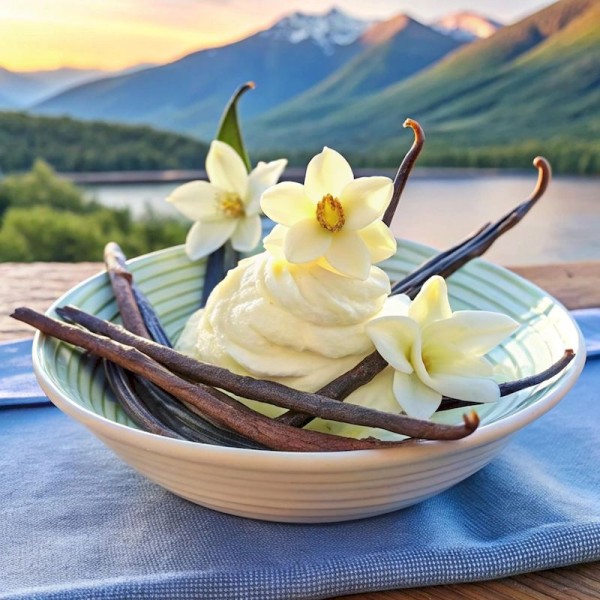



 No reward points for this product.
No reward points for this product.
